Our favourite places to stay on this sleepy Cebu island.
Mt. Pinatubo Day Tour: What to Expect and How to Prepare
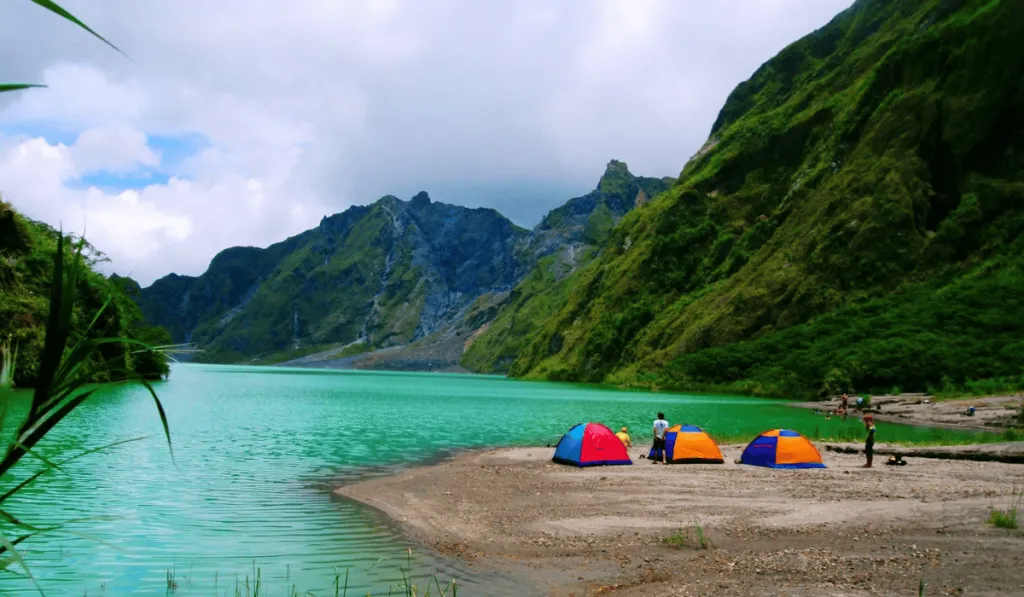
Tucked in the heart of Central Luzon, Mount Pinatubo is a destination unlike any other in the Philippines. Known for the catastrophic eruption of 1991, this once-dormant volcano reshaped the land and the lives around it. But from the ashes, something remarkable emerged: a striking crater lake, dramatic lahar fields, and a raw, breathtaking terrain.
Thanks to the coordinated efforts of local government units and indigenous communities, Mount Pinatubo officially reopened on June 23, 2025. With new tour policies, updated trail rules, and sustainable practices in place, there’s no better time to rediscover this iconic destination.
Also read: Mt. Pinatubo Is Now Back: The Capas Trail Reopens with New Tour Rules
Is Mount Pinatubo open for tours in 2025?
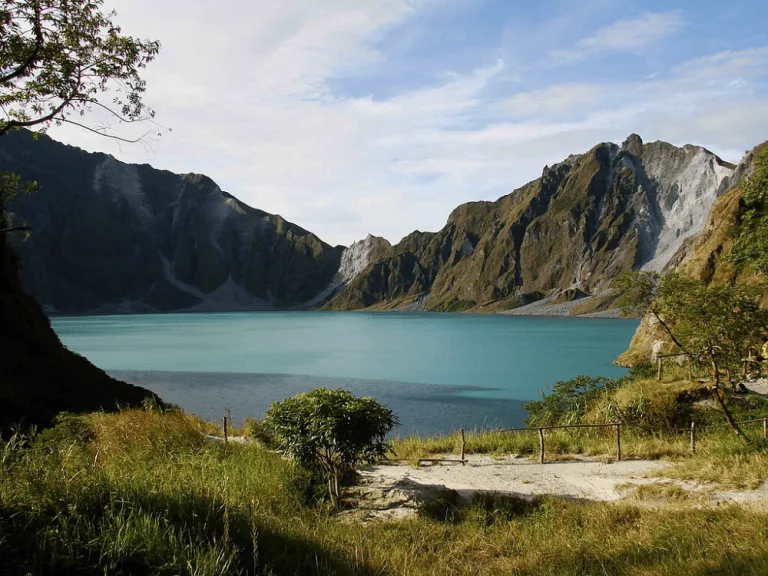 Mount Pinatubo | Chris Tomnong via Wikimedia Commons
Mount Pinatubo | Chris Tomnong via Wikimedia Commons
Yes! After a temporary suspension earlier this year due to trail maintenance and ancestral domain concerns, the Capas Trail is once again fully open to tourists. Hikes to the crater are now allowed via Sta. Juliana in Capas, Tarlac, but only through LGU-accredited tour operators such as Pinatubo Mountainero.
The reopening comes with stricter safety rules, regulated scheduling, and active participation from local Aeta and Ayta communities, who help guide, protect, and manage the area.
Must-try activities on your Mt. Pinatubo tour
A Mount Pinatubo tour is more than just a hike. It’s an experience filled with adrenaline, scenery, culture, and surprising moments.
Ride a 4×4 through the lahar trails
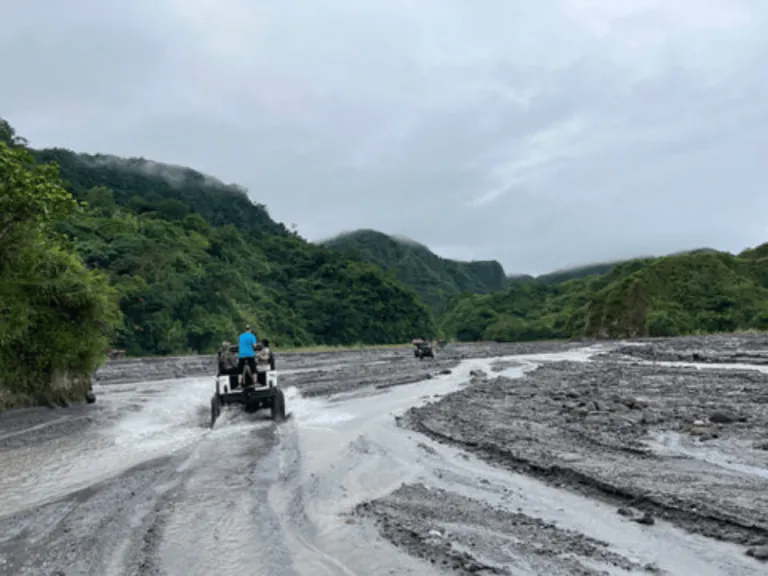 Image credit: Pinatubo Mountainero Official Website
Image credit: Pinatubo Mountainero Official Website
Your Mount Pinatubo day tour begins with an exhilarating 4×4 off-road adventure across vast lahar plains. The landscape feels otherworldly, carved by ash and volcanic debris. A must-see along the way is Toblerone Hills, a set of sharp, triangular ridges that resemble giant chocolate bars.
Hike to the crater lake
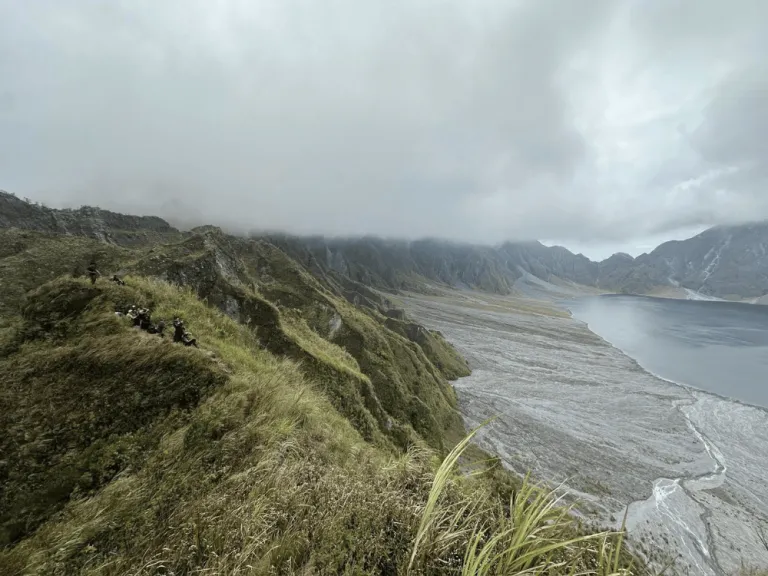 Image credit: Pinatubo Mountainero | Official Facebook Page
Image credit: Pinatubo Mountainero | Official Facebook Page
After the jeep ride, it’s time to trek to the summit. The Mount Pinatubo hike is around 5.5 km one way and mostly flat, passing through scenic riverbeds, shallow streams, and canyon-like rock formations. It’s beginner-friendly and takes around 1.5 to 2 hours, depending on your pace.
See the stunning crater lake
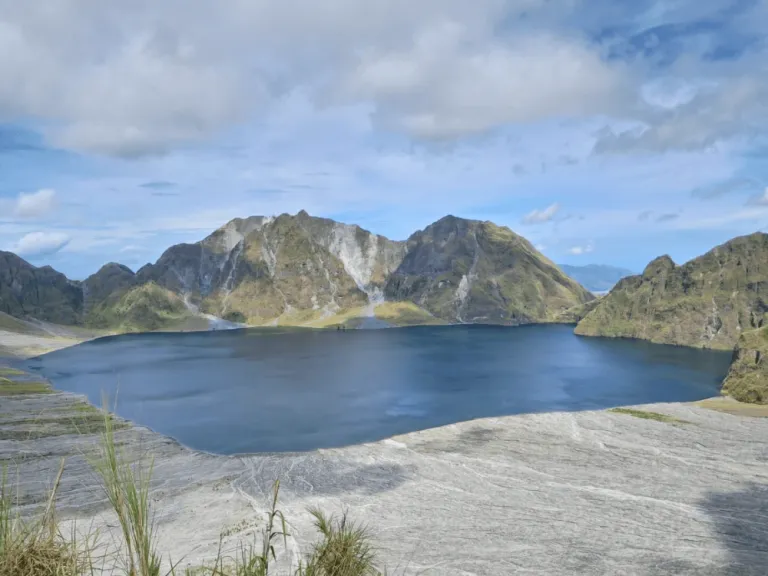 Image credit: Pinatubo Mountainero | Official Facebook Page
Image credit: Pinatubo Mountainero | Official Facebook Page
At the top, you’ll find the turquoise Mount Pinatubo crater lake with a surreal and peaceful contrast to its explosive origins. While swimming is not allowed, the view alone is unforgettable, whether you catch it under the sun or shrouded in mist.
Picnic with a view
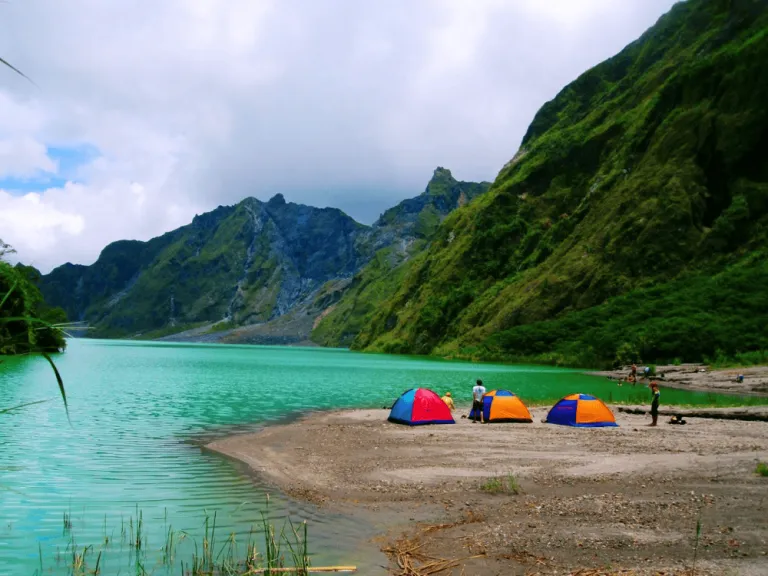 Image credit: Mount Pinatubo Philippines | Official Facebook Page
Image credit: Mount Pinatubo Philippines | Official Facebook Page
There are designated picnic spots near the viewing deck. Many travellers bring packed meals to enjoy while gazing at the breathtaking lake below. If you plan to do the same, remember to practise Leave No Trace principles, and never leave behind plastics or any kind of waste.
Engage with the local Aeta Community
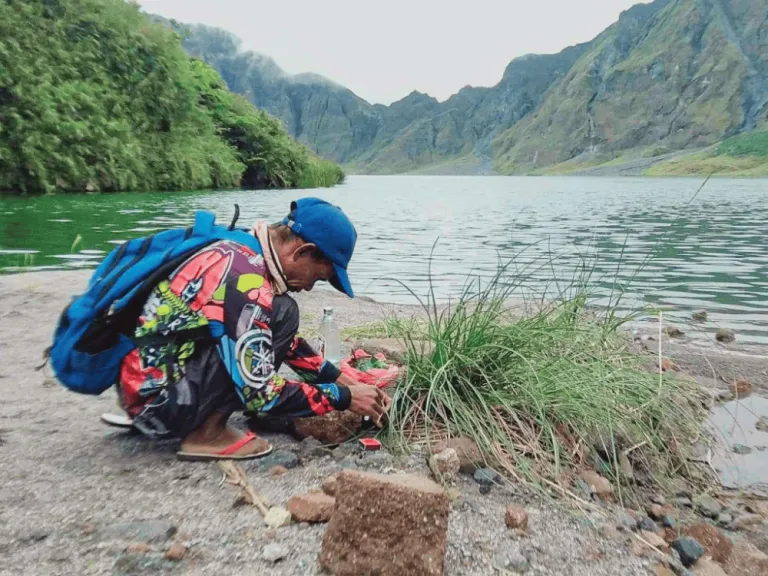 Image credit: Capas Tarlac Government Official Website
Image credit: Capas Tarlac Government Official Website
Some Mount Pinatubo tour guides are from the Aeta community and have lived in the area for generations. Talking to them offers insight into local life and resilience after the 1991 eruption. Show respect by asking before taking photos, supporting local goods, and being mindful while visiting their ancestral land.
How to go to Mount Pinatubo
All Mount Pinatubo tours officially begin at Sta. Juliana in Capas, Tarlac, which serves as the designated jump-off point.
From Manila: Drive via NLEX and SCTEX, then exit at Capas, Tarlac. The drive takes approximately 2.5 to 3 hours. If you prefer public transport, take a bus bound for Baguio or Pangasinan and ask to be dropped off at Capas Junction. From there, take a tricycle to Sta. Juliana.
From Clark: If you're arriving via Clark International Airport, the fastest way is to book a private van or Grab to Sta. Juliana. Travel time is about 1.5 hours.
From Baguio: Take a southbound Victory Liner or Genesis bus bound for Manila and alight at Capas (approx. 3.5 to 4 hours), then ride a tricycle to the tourism centre in Sta. Juliana.
TripZilla Philippines Tip: Be at Sta. Juliana, Capas by 5:30 to 6:00 AM. Tours start early due to environmental rules and safety protocols. Latecomers may not be accommodated. Since public transport is limited in the morning, consider booking a tour with transfers or staying overnight for a hassle-free Mount Pinatubo adventure.
When to go and what to bring
The best time for a Mount Pinatubo tour is during the dry season, from December to May. The clearest skies and safest trails are usually from January to March. Avoid the rainy season from June to September, when heavy rains can make trails impassable and obscure the crater view.
Here’s what to pack for your hike:
Comfortable hiking shoes or sandals with grip
Rain jacket or poncho
At least 2 litres of water
Hat, sunscreen, and sunglasses
Packed lunch and snacks
Waterproof bag for electronics and valuables
As of June 2025, Mount Pinatubo tour rates include a ₱500 guide fee per group, ₱300 environmental fee per person, and ₱2,500–₱3,500 for a 4×4 jeep rental (good for up to 5 people). Fees are usually shared, and many tour packages already include these costs.
Also read: Mount Pinatubo: Day Trekking with a Toddler
More than just a volcano
A Mount Pinatubo tour isn’t just about the views. It’s a living story of destruction, healing, and rebirth. From the dusty 4×4 rides to the serene crater lake and the warmth of the Aeta guides, every moment reveals something deeper.
Whether you’re a thrill-seeker, a nature lover, or someone looking for a meaningful travel experience, Mount Pinatubo deserves a spot on your Philippine travel list!
Published at
About Author
Jennylene Dela Cruz
Subscribe our Newsletter
Get our weekly tips and travel news!
Recommended Articles
10 Bantayan Island Resorts, Hotels, and Rentals for Your Tropical Escape 14 Best Credit Cards for Travel in the Philippines The only plastic we need for travel.
10 Best Mountain Cafes in the Philippines for Your Peak Coffee Experience Coffee date on the mountains, anyone?
10 Best Things to Do in Los Angeles Los Angeles is more than Hollywood stars. From hikes with killer views to beaches straight out of a rom-com, here are 10 must-do LA experiences for Filipino travellers or any wanderers in general!
10-day Christmas and New Year Japan Trip: Complete Travel Itinerary Celebrate Christmas and New Year in Japan with this 10-day holiday vacation itinerary packed with Tokyo lights, Kyoto charm, and Osaka adventures.
Latest Articles
After Surviving Typhoon Tino, These Are the Things I’m Glad I Packed Essential typhoon travel items
What Makes Sierra Madre So Special?: Luzon’s Backbone and Shield From Typhoons Sierra Madre saves lives, wildlife, and farmland. Are we letting it disappear?
How to Help Typhoon Kalmaegi (Tino) and Typhoon Fung-wong (Uwan) Victims and Avoid Donation Scams List of legitimate donation drives to the victims of Typhoon Kalmaegi and Fung-Wong
Flights Canceled Across PH as Super Typhoon Uwan Hits: Full List Nov. 9–12 Dozens of domestic and international flights are canceled as Super Typhoon Uwan hits the Philippines. See which flights are affected and what passengers should do.
Cebu Pacific Offers ₱388 International Flights Until 09 November Plan your 2026 travel early!

